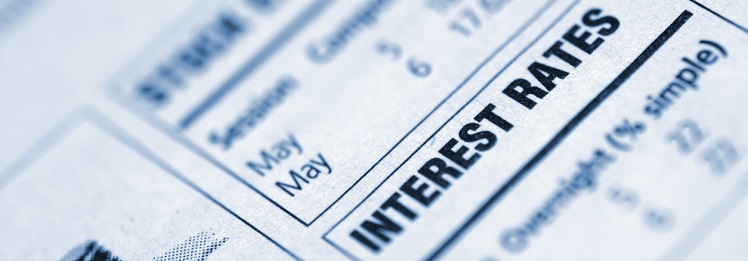Articles
Noninterest Bearing Deposits Soon to Be Nonentities?
- By Andrew Deichler
- Published: 10/26/2018

Companies have been pulling cash out of noninterest bearing deposits, and banks have been taking a hit. However, this could also have negative ramifications for corporates in the long run.
MAJOR MONEY MOVES
The Wall Street Journal reported that in response to recent rate hikes from the Federal Reserve, corporates have been pulling billions of dollars out of noninterest earning accounts and are putting that money into higher-yielding alternatives. This trend has been negatively impacting bank profits, and if it continues, banks could really find themselves in a bind.
The four largest U.S. banks—JPMorgan Chase, Bank of America, Wells Fargo and Citigroup—confirmed that U.S. noninterest bearing deposits in Q3 2018 were down 5 percent from a year earlier. Bank clients withdrew more than $30 billion from June 2017 to June 2018.
“There’s no precedent for this,” said the representative for a major U.S. bank. “Last time around, there wasn’t a lot of cash in the system, and you didn’t have interest bearing accounts. The alternatives to noninterest bearing products were sweeps—so everything just got swept off the balance sheet.”
Now, corporates are not only putting money into sweep accounts, but also interest bearing deposits, while noninterest bearing deposits are down across the board. “This is the first time in a rising interest rate environment that we’ve had interest bearing accounts that have meaningful interest,” said Tom Hunt, CTP, director of treasury services for AFP.
The ECR and Interest Rates
The representative said that in the years since the financial crisis, noninterest bearing deposits has become his bank’s base product. “So one of the challenges that we’re facing is managing the inevitable decline of those deposits, because as [the Earnings Credit Rate (ECR)] goes up, you’re going to need less balances to cover your fees,” he said. “So that leaves banks with a bit of a quandary.”
For example, if a treasurer has $100 million in an operating account, the bank would look at it as $100 million in operating cash. “So if you double the client’s ECR, then they need half the amount of cash to cover their fees,” the representative said. “So their required balances go down to $50 million. Now, does that mean their operating cash has gone down by $50 million? It seems they suddenly have less operating cash. So this is where we’ve been quite thoughtful and deliberate about our interest bearing strategy. We want to try and capture balances that rotated out of noninterest bearing deposits.”
The goal of banks is to keep cash in the deposit system, if they can. And if the ECR won’t keep the cash there, then the hope is that the interest rate will. So the question then becomes what the right interest rate is. “How aggressively is the treasurer looking at alternative funds? If the treasurer was going to take that money and put it into a money market fund, then you’ll have to compete with those money market fund rates. Banks have to have the appetite to compete with those rates. We’ve observed banks being pretty aggressive in trying to capture any of the available cash that’s out there,” the representative said.
This is a bit of a shakeup; for some time, banks appeared to be turning away deposits. “All things being equal, banks are there to take deposits and use them to fund loans,” the representative said. “When that slows down there’s usually a reason. On the loan side, the concerns are around credit quality. It’s not that they don’t want loans, it’s that their appetite for riskier loans changes. On the deposit side, the only deposits banks got out of were ones that were completely unlendable. Otherwise, I think we’re all open to deposits, it’s just a question of price.”
He noted that if the pricing went to a place that banks weren’t comfortable with, then they’d walk away. “But I don’t think any bank will turn away a well-priced deposit,” he said. “Because the worst thing you could do is just park it at the Fed. If the client says, I need you to pay my deposits at one basis point, you’re never going to turn that away in this rate environment.
The banker added that if noninterest bearing deposits are truly rotating out, then banks will try in earnest to keep good, lendable cash on the balance sheet. “If a client is going to keep cash very stable in a money market fund, then we’re rather have that cash on balance sheet, because it’s stable. We’ll pay for that stability,” he said.
Covering Key Costs
The banker noted that part of the value of having a noninterest bearing deposit is the services that are packaged with that deposit. The cost of the banking relationship—providing all those services to the client—needs to be paid for somehow. And a noninterest bearing deposit is one way for the corporate to do that. “If you were to migrate to a paradigm where everybody got money market fund rates, then that would not pay for the cost of clearing checks or other services,” he said. “You’d have to jack up treasury services prices.”
Hunt added: “In other words, having balances with your bank subsidizes your pricing in a way.”
The banker agreed. “I think you’ll find that the best rates you’re going to get are when you have a good range of services and nice balances,” he said. “A client may pay no fees because they are offsetting them all with a noninterest bearing account, and that’s probably the best client.”
Copyright © 2024 Association for Financial Professionals, Inc.
All rights reserved.

